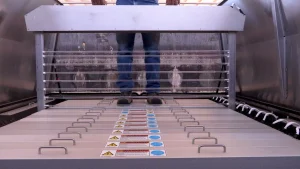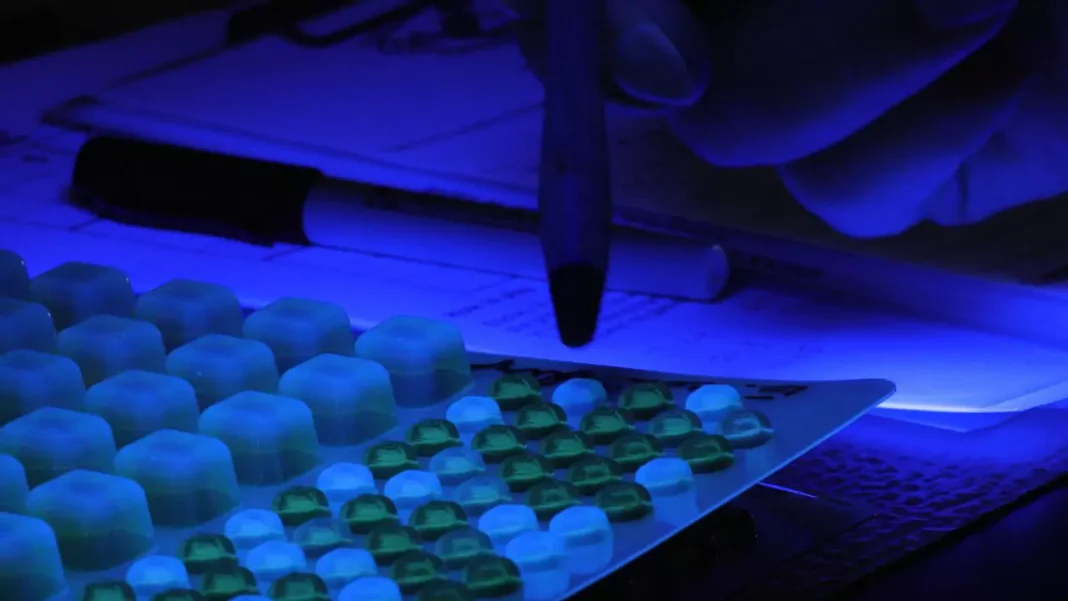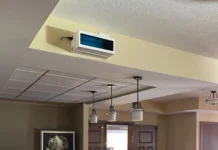Article provided courtesy of Enaqua, a Grundfos company
Water is scarce and in high demand in the mountain desert town of Payson, Arizona. As a result, the city reuses its water. It sends the cleaned wastewater to a public recreational lake and then onward for irrigating green areas in public parks, golf courses and schools. Therefore, it is vital that the water is treated correctly and thoroughly, or else it would put people’s health at risk.
Payson’s wastewater treatment plant uses a non-contact UV system in its last stage of treatment. The system is designed with water flowing through light-transmitting activated fluoropolymer (AFP™) tubes and with the UV lamps placed on the outside of the tubes. The UV disinfection system is designed without the use of expensive amalgam lamps and quartz sleeves, providing a lamp replacement time of less than one minute. Intelligent flow, level pacing and the use of non-amalgam LPHO lamps provide energy savings up to 60%. The system serves the plant’s needs for low maintenance, low energy use and dependable disinfection.
“In a day-to-day operation, it runs. We don’t have to touch it, and it does its job,” said Garrett Goldman, district manager, Northern Gila County Sanitary District.
The situation and challenge
Payson, population 15,000, sends nearly all its wastewater to the American Gulch Wastewater Reclamation and Reuse Facility on the edge of town. It is operated by the Northern Gila County Sanitary District.
The five-stage Bardenpho plant treats the wastewater biologically.
After the effluent has been treated, the plant sends it out to Green Valley Lake in the center of Payson – a popular area for boating and fishing.
The water also is distributed to golf courses, parks, schools and the local cemetery for lawns, lakes and irrigation, said Chief Operator David Millien.
“The district really focuses on providing high-quality water for the community,” he said. “So, we’re responsible for the safety of the community.”
Goldman added: “If our treatment process is not working correctly, we are putting the entire community at risk. The noncontact UV disinfection system is the final stage in our treatment process. It’s what kills all of the ‘bad bugs’ in the treated water. If it’s not working correctly, we are polluting the environment.”
The solution

In the mid-2010s, the plant expanded its treatment capacity and upgraded its biological treatment processes. As part of these upgrades, the plant needed to replace its aging, vessel-type UV systems.
Enaqua’s noncontact UV reactors were installed in October 2015. Since that time, the Payson plant has consistently met the Environmental Protection Agency’s regulations, as well as the nondetectable effluent E. coli limit for ARIZONA TITLE 18 Class A+ reuse effluent. This water quality standard requires effluent E. coli limits of 4/7 samples nondetectable and single sample maximum of 23.0 CFU/100 ml.
“We’ve been in compliance with our permits for years, with no violations, and we want to keep it that way,” said Goldman.
The outcome
“All in all, everybody is really pleased with the system,” said Millien.
He said the operators appreciate the minimal time needed for cleaning and maintenance. The noncontact technology means that the effluent runs through AFP tubes, with the UV lamps housed around the AFP tubes in the dry body of the reactor, never coming in contact with the effluent.
“With the noncontact system, maintenance is really minimum. We do a back-flush on the cooling system once a week, which takes about 20 minutes, and that’s when the guys wipe down the unit to keep the dust and stuff off. That’s about it,” Millien said.
The Payson plant has two Enaqua reactors, and each is designed to handle up to 3.5 million gallons of effluent a day (13,250 m3/day). Each reactor has three banks of UV lights per channel, but typically the plant operates only two banks, due to the system’s efficient design and flexibility.
“With the three stages, we were already saving about 20% to 30% on the electricity compared to the old UV system,” said Millien. “And now we’ve shut off another stage, so we’re running at two-thirds of what was designed. We’re pleased and even looking into running just one stage. So, there’s more savings possible.”
The Northern Gila County Sanitary District put a big focus on energy efficiency and savings during the plant’s expansion. A bank of solar panels operates the treatment plant during the daytime on sunny days, Millien added.
According to Goldman, “The more we can keep our operation and maintenance cost down is a benefit to our ratepayers. And that is our one goal: to provide the best service at the lowest cost to our ratepayers. We don’t have to touch it, and it does its job.”






